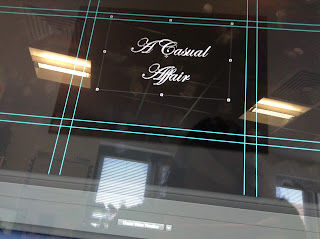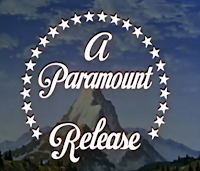Chayana's Analysis of Titles
Kill Bill
 The title of the film immediately suggests action, as the word 'Kill' is a violent word that connotes death and revenge. It draws the audience in with the enigma that the title alone creates, as the audience is wondering who Bill is and why somebody wants to kill him. This ties to thriller as it uses enigma and the theme of death is a recurring theme throughout thriller. Moreover, the fact that the title rhymes, makes the name of the film memorable and makes it more likely that the audience will go and watch the film and therefore helps with the promotion and generates anticipation.
The title of the film immediately suggests action, as the word 'Kill' is a violent word that connotes death and revenge. It draws the audience in with the enigma that the title alone creates, as the audience is wondering who Bill is and why somebody wants to kill him. This ties to thriller as it uses enigma and the theme of death is a recurring theme throughout thriller. Moreover, the fact that the title rhymes, makes the name of the film memorable and makes it more likely that the audience will go and watch the film and therefore helps with the promotion and generates anticipation. The first title to appear in 'Kill Bill' is 1:25 seconds in, and is introduced along with the sound of a gun shot. This alarms the reader, and causes impact as the shot before this is the shocking shot of blood splatting against the floor and it only last for a slip second. By placing the title in this place, it leaves the audience in a state of shock, but gives them time to digest the information the they were given in the scene, and changes the pace of the film, with the help of non-diegetic music that has a slow tempo, which creates contrast and makes the gun shot all the more shocking.
The first title to appear in 'Kill Bill' is 1:25 seconds in, and is introduced along with the sound of a gun shot. This alarms the reader, and causes impact as the shot before this is the shocking shot of blood splatting against the floor and it only last for a slip second. By placing the title in this place, it leaves the audience in a state of shock, but gives them time to digest the information the they were given in the scene, and changes the pace of the film, with the help of non-diegetic music that has a slow tempo, which creates contrast and makes the gun shot all the more shocking.
This then leads into a sequence of titles that lasts for the next two minutes of the opening of the film, where the credits are shown on a black background with white writing until the last minute, where the titles are shown over a silhouette of 'The Brides' profile. Even then, the writing is white over black shadows. This is effective as it allows the audience to focus on the information that is being given, and black symbolizes power and darkness, while white symbolizes innocence and hope, so the important information being shown in white shows that the innocence and goodness is the important part to focus on, and should be the case throughout the rest of the movie.
The first bit of information presented is the director of the film, Quintin Tarantino, and the fact that this is his fourth film. This suggests that as the director of the films, this film is connected to his other pieces of work, and this is like a another book.
 The second piece of information shown is the leading actress's name, which is 'Uma Thurman'. In this section of the credits, she is the only actor mentioned before the name of the film. This shows that she is the main protagonist of the film and is the most important person to follow.
The second piece of information shown is the leading actress's name, which is 'Uma Thurman'. In this section of the credits, she is the only actor mentioned before the name of the film. This shows that she is the main protagonist of the film and is the most important person to follow.
Throughout the sequence, the font and the font size are consistent, apart from the title of the film, which is bigger than the rest of the credits, as it is the most important piece of information. The other time the font differs is when introducing a new category for the credits.
Deadpool
 The opening of the movie Deadpool is set up to be a continuous shot that pan through a car crash that lasts 2 minutes. The sequence starts with an ECU of bullet that pans out to show a man with a very distressed expression and a mark on his head that suggests that it was him who got shot with the bullet. It also introduces 'Twentieth Century FOX' as the studio that produced the movie.
The opening of the movie Deadpool is set up to be a continuous shot that pan through a car crash that lasts 2 minutes. The sequence starts with an ECU of bullet that pans out to show a man with a very distressed expression and a mark on his head that suggests that it was him who got shot with the bullet. It also introduces 'Twentieth Century FOX' as the studio that produced the movie. The shot then pans out to a shot through the lid of a coffee shot, and coffee mid air. This shows that this sequence is a freeze frame and that we are navigating through the scene, as liquid cannot be suspended in the air, so we understand the nature of the shot. In this shot, we are also shown that it is in association to Marvel Entertainment, which again, is seemingly normal
The shot then pans out to a shot through the lid of a coffee shot, and coffee mid air. This shows that this sequence is a freeze frame and that we are navigating through the scene, as liquid cannot be suspended in the air, so we understand the nature of the shot. In this shot, we are also shown that it is in association to Marvel Entertainment, which again, is seemingly normal Then we are introduced to the next title. In the shot, there is a man holding a gun, which suggest the danger. However, the credit say 'Some Douchbag's Film', rather than crediting the actual owner of the film. This sets up the nature of the film, as the film is supposed to be dramatic and full of fighting, which would include guns, but it also shows that the film is comedic and is poking fun at itself. This continues throughout.
Then we are introduced to the next title. In the shot, there is a man holding a gun, which suggest the danger. However, the credit say 'Some Douchbag's Film', rather than crediting the actual owner of the film. This sets up the nature of the film, as the film is supposed to be dramatic and full of fighting, which would include guns, but it also shows that the film is comedic and is poking fun at itself. This continues throughout.The first name of the actor's is 'God's perfect idiot', which is proceeded by a shot of a magazine cover that shows the lead actor on the cover of a magazine being called the sexiest man alive. This is a real article that was published in 2010, as seen by the article showing Prince William and Kate Middleton's engagement.
Once more, this is breaking the fourth world, showing that the movie is acknowledging that the actor exist in this universe as an actor. Another example of this when a card with 'The Green Lantern' passes on the screen. This was acknowledging the fact that the actor playing the character had played a super hero previously. moreover, it was a superhero from Marvel's 'rival' DC.
The other listings of actors then begin to list stereo types of people you would usually find in movies, such as 'A Hot Chick', 'A British Character', 'A Moody Teenager', 'A CGI Character', 'The Comic Relief', etc. which is all happening with a dramatic background with explosions and weapons. this is pointing an accusatory finger at the audience, saying that they wouldn't care who was playing these characters, as long as they were in there. It is again very comedic.
Even the higher stages of the production are made fun of in the intro, the producers being called 'Asshats,' and the director being called an 'Overpaid Tool'. This shows that everybody involved in the film had a good sense of humor, and was not taking themselves seriously.
 The only people 'credited' here who are really shown in a good light, are the writers, which suggests that it was their idea to put this in the title as they praise themselves. it also points another finger, saying that the writers of films rarely get noticed, but they do a lot of hard work.
The only people 'credited' here who are really shown in a good light, are the writers, which suggests that it was their idea to put this in the title as they praise themselves. it also points another finger, saying that the writers of films rarely get noticed, but they do a lot of hard work.
The point of having a opening 'credits' that didn't properly credit anybody, was to set up the nature of the film, which was one that parodied other films, itself, and broke the fourth wall as comedic devices to create an unorthodox comedy that is unique. Moreover, it also created interest, by showing gradually showing fractions of an action scene and gets the audience asking questions about how they got into that situation.



































